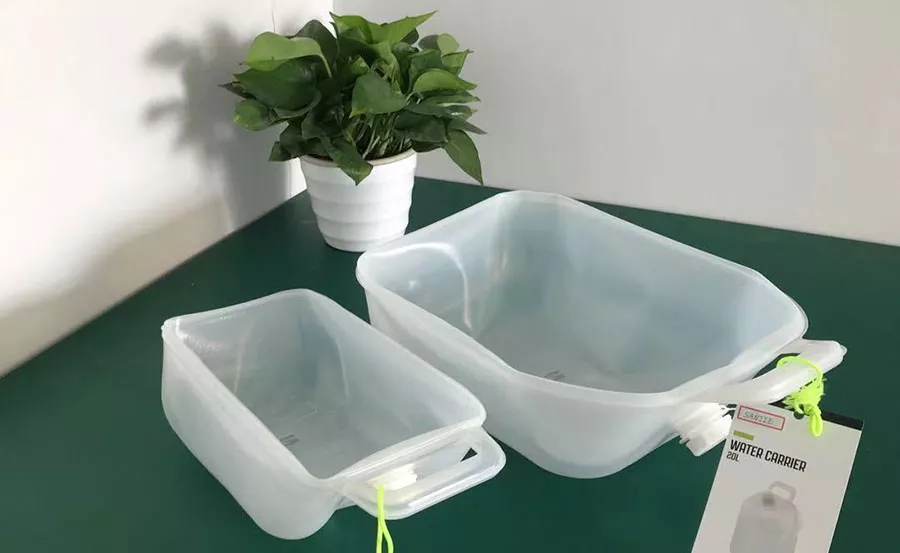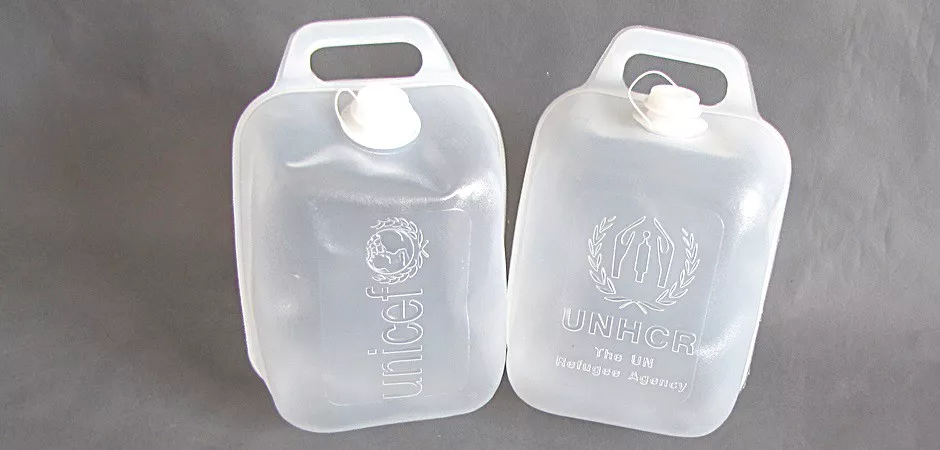Transporting hazardous materials like chemicals or fuels requires strict safety compliance, and UN-certified jerry cans are a trusted solution. Their durable design, specialized materials, and global certification offer essential protection during transit. This article explores what makes a jerry can UN-certified and why it’s ideal for handling dangerous goods.
Understanding UN Certification
UN-certified semi-collapsible jerry cans meet regulations established by the United Nations Committee of Experts on the Transport of Dangerous Goods. These standards are adopted globally and integrated into regional regulations, such as:
- The international road transportation of hazardous materials is covered by the European Dispute Resolution (ADR) process.
- International Maritime Dangerous Goods Code, or IMDGs
- Title 49 of the Code of Federal Regulations (CFR) of the United States
- The International Air Transport Association’s (IATA) laws governing dangerous goods
UN-certified containers, including jerry cans, undergo rigorous testing and evaluation before they are approved for use in transporting hazardous goods across borders, modes of transport, and industries.

What Makes a Jerry Can “UN-Certified”?
A jerry can becomes UN-certified only when it passes a series of stringent design and performance tests that simulate real-world handling, accidents, and environmental stress. Key components of the certification process include:
1. Material and Structural Requirements
UN-certified jerry cans are made from high-grade materials that resist chemical degradation and physical deformation. The most common ones are:
- High-density polyethylene, or HDPE, is well known for its remarkable chemical resistance and hardness.
- Steel: Used for flammable or highly reactive liquids.
- Composite materials: Sometimes layered with plastic or fiber reinforcements for extra strength.
The structure must include stable sidewalls, reinforced corners, and leakproof closures to prevent rupture or spills during impact or pressure changes.
2. Performance Testing
To obtain UN certification, jerry cans must pass multiple tests simulating harsh transport conditions:
- Drop Test: Filled cans are dropped from predetermined heights (often 1.2m or more) onto different surfaces to check for cracking or leakage.
- Leakproofness Test: Pressure is applied internally to ensure there are no leaks from seams, caps, or closures.
- Hydrostatic Pressure Test: Containers are pressurized with water for a specified time to assess structural integrity under pressure.
- Stacking Test: Weight is applied on top of the container for extended periods to simulate storage and transport stacking.
- Vibration Test: Simulates the shaking during road or sea travel to ensure the container doesn’t degrade or loosen.
- Internal Pressure Test: Verifies the can’s ability to withstand internal gas build-up without bursting.
Only containers that pass all these tests are embossed or labeled with a UN marking code that identifies their specifications and capabilities.
Decoding the UN Marking on Semi-Collapsible Jerry Cans
Each UN-certified collapsible jerry can bears a permanent UN marking, usually printed or molded into the container. Here’s an example and what each part means:
- UN 3H1/Y1.9/150/23 USA/M4567
- UN: Indicates compliance with UN standards.
- 3H1: Code for a plastic jerry can without a removable head.
- Y: Indicates packaging group (Y = II & III; X = I, II, III).
- 1.9: Maximum specific gravity of the liquid it can safely contain.
- 150: Hydrostatic pressure rating (kPa).
- 23: Year of manufacture (2023).
- USA: Country of approval/testing.
- M4567: Manufacturer’s code or certification agency ID.
This code ensures traceability and informs shippers and inspectors of the container’s compliance and suitability for various substances.
Why Dangerous Goods Need UN-Certified Jerry Cans
1. Protection Against Leaks and Explosions
When transporting flammable, toxic, or reactive materials, even a minor leak can result in environmental damage, fires, or exposure-related injuries. UN-certified jerry cans are designed to:
- Withstand high internal pressures
- Resist chemical attack
- Maintain their structure under heat or cold
This ensures the integrity of the package even under extreme conditions like rough handling or sudden temperature changes.
2. Global Legal Compliance
Most countries and transport agencies require UN certification for shipping hazardous materials. Using uncertified containers can result in:
- Legal penalties or shipment rejection
- Delays at ports and border inspections
- Voided insurance coverage
- Environmental liabilities and reputational harm
UN-certified jerry cans eliminate these risks by meeting international shipping standards, allowing smooth transport across road, rail, sea, and air.
3. Durability for Multimodal Transport
Modern supply chains often involve multimodal transport—transferring cargo across trucks, ships, and aircraft. UN-certified jerry cans are built to endure all stages of this journey. Their rugged construction allows:
- Easy stacking without collapse
- Resistance to vibrations and compression
- Reliable sealing despite atmospheric pressure changes
- For sensitive chemicals or pharmaceuticals, this reliability can be mission-critical.
4. Ease of Identification and Traceability
UN markings provide transparency about the container’s history and capabilities. This simplifies inventory management and allows shippers to match the jerry can with the appropriate class of dangerous goods, ensuring compliance with labeling and documentation rules.

Important Sectors Relying on Uncertified Jerry Cans
UN-certified jerry cans are essential across a wide array of sectors:
1. Chemical Manufacturing
Acids, solvents, and cleaning supplies are frequently shipped and stored in Jerry cans. The chemical compatibility of the container ensures the product’s stability and prevents container degradation.
2. Petrochemical and Fuel Distribution
From diesel to kerosene, fuel transport requires flame-resistant containers that won’t spark or leak. UN steel jerry cans are common in this field.
3. Pharmaceuticals and Healthcare
Sterile, leakproof, and contamination-resistant packaging is necessary for certain drug intermediates, disinfectants, and lab reagents. Composite UN jerry cans often meet these strict hygiene and purity requirements.
4. Agriculture and Pesticides
Farmers and distributors transport herbicides, fungicides, and other agrochemicals in UN-certified containers to ensure safe handling and application.
5. Defense and Emergency Relief
Military logistics and humanitarian operations often require fuel, water, or chemicals to be delivered under harsh conditions. UN jerry cans provide the durability and compliance needed for global deployment.
Advancements in UN-Certified Jerry Can Design
Manufacturers are coming up with new ideas in the following ways as regulations change and sustainability gains importance:
1. Sustainable Materials
Newer jerry cans may be made from recycled HDPE or bio-based plastics that meet UN performance standards. These reduce carbon footprint without compromising safety.
2. Smart Packaging Features
Some containers now include RFID tags or QR codes to enable real-time tracking, digital documentation, and lifecycle monitoring—improving transparency and chain-of-custody management.
3. Improved Ergonomics
Modern designs feature handles for easier pouring, stackable shapes, and tamper-evident seals to improve safety and usability.
4. Dual-Use Designs
Hybrid jerry cans are being developed to transport both hazardous and non-hazardous liquids by using interchangeable closures and modular labeling systems.
Regulatory Compliance and Inspection Considerations
Using a UN-certified jerry can is only the first step. To remain compliant throughout the shipping process, shippers must also:
- Label the container correctly based on the substance (flammable, corrosive, etc.).
- Use appropriate closures and sealants that are compatible and secure.
- Keep proof of certification and batch testing from the manufacturer.
- Avoid reuse beyond recommended cycles unless recertified for reuse.
- Ensure training for handlers in packaging and spill prevention protocols.
Internal compliance teams or transport authorities may do routine audits and inspections, particularly for high-risk commodities.
Conclusion
UN-certified jerry cans are engineered safety tools designed to protect people and the environment during hazardous goods transport. With strict testing, specialized materials, and global standards, they ensure safe, compliant logistics. For exporters, responders, or manufacturers, using UN-certified packaging is not just smart—it’s required for meeting global safety regulations.
